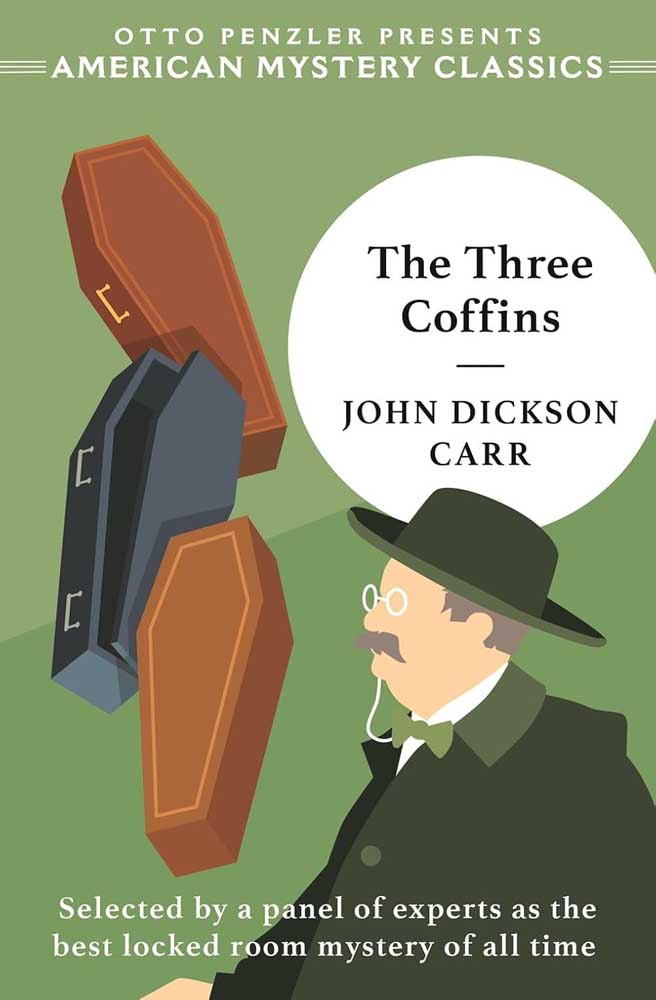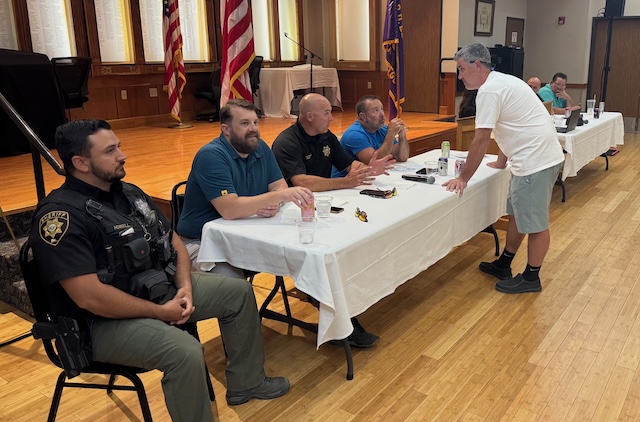Book reviews: These mystery novels are so clever they deserve a second read
Published 5:00 am Saturday, December 7, 2024

- books-mysteries
Over the years, I’ve read plenty of ingenious mystery novels twice, but John Dickson Carr’s “The Three Coffins” is among the very few I’ve enjoyed three times. This fall, Penzler Publishers has reprinted this greatest of locked-room whodunits as an American Mystery Classic, where it joins a diverse series that includes — to mention only the most recent offerings — Mary Roberts Rinehart’s “The Door,” Dorothy B. Hughes’s “The Fallen Sparrow” and Ellery Queen’s “Cat of Many Tails.”
Among the standout pleasures of Carr’s 1935 novel are two scenes of sheer chutzpah. In the first, as three horrified witnesses look on, a man is suddenly shot dead at point-blank range while standing alone in the middle of a deserted street — and the only footprints in the freshly fallen snow are the victim’s own. How was it done? Later, Carr’s recurring detective, Dr. Gideon Fell, brazenly admits he’s a fictional character, then proceeds to present his “Locked-Room Lecture,” which tabulates the myriad ways to commit a seemingly impossible crime.
Trending
While Carr devoted his narrative legerdemain to novels, Edward D. Hoch applied comparable ingenuity to the short story. Crippen & Landru have previously issued more than a dozen collections of the Dr. Sam Hawthorne, Captain Leopold and Simon Ark “howdonits,” in which the solution to an enigmatic crime largely depends on determining the method by which it was carried out. In “The Will o’ the Wisp Mystery,” Hoch further challenges himself by interlacing six clever short mysteries so that they perform double duty as small pieces in a much larger puzzle.
Here’s the premise: When a prison van is hijacked, six convicts escape and seemingly vanish. Frustrated, the government calls in a dogged “man hunter” named David Piper to track them down. Each escapee is allocated a story of his or her own. Before long, though, Piper notices unexpected connections among the five men and one woman, eventually deducing that the mass getaway served to disguise a truly sinister purpose. Besides the six-part “Will o’ the Wisp Mystery,” this latest Hoch collection also includes seven mysteries solved by Father David Noone.
In our own time, Tom Mead has been widely acclaimed for his three novels featuring the magician detective Joseph Spector. But Mead has also been writing short stories, 11 of which make up another attractive Crippen & Landru volume, “The Indian Rope Trick and Other Violent Entertainments.” In the title story, the celebrated illusion receives an unexpectedly deadly twist, while in “The Octagonal Room,” a student of the occult becomes obsessed with an eerie chamber that appears to cause his gruesome death. “The Problem of the Velvet Mask,” rich in misdirection, is a complicated study of revenge for a past injustice. All the murder methods are suitably ingenious, even dizzyingly so, but to my mind sometimes insufficiently clued.
A masterpiece of film noir, “Sudden Fear” earned Oscar nominations in 1953 for two of its stars, Joan Crawford and Jack Palance. Surprisingly, the suspense novel it’s based on, by Edna Sherry, hadn’t been easy to find until Stark House Press published a reprint last year. In atmosphere and plot, Sherry’s tense psychological thriller resembles a mashup of three movie classics about wealth, ambition and vanity: “Sunset Boulevard,” “Suspicion” and “The Talented Mr. Ripley.”
A mystery that doesn’t surprise is hardly a mystery at all, and even a study in suspense like “Sudden Fear” relies on one noirish twist after another. In some cases, the author’s final revelations are actually so unexpected or breathtaking that you might want to read the book twice, or even three times, if only to discover the carefully planted clues and subtleties that might have been detected the first time round — but almost never are.








